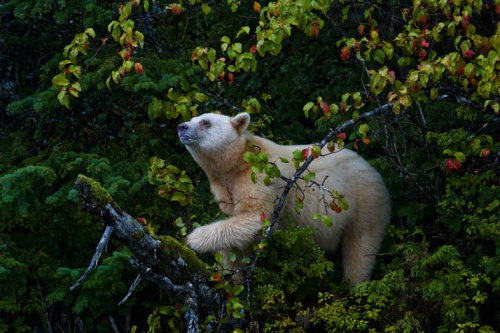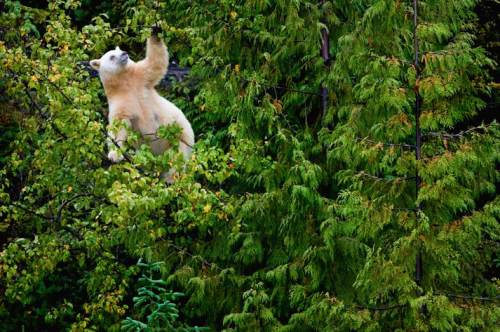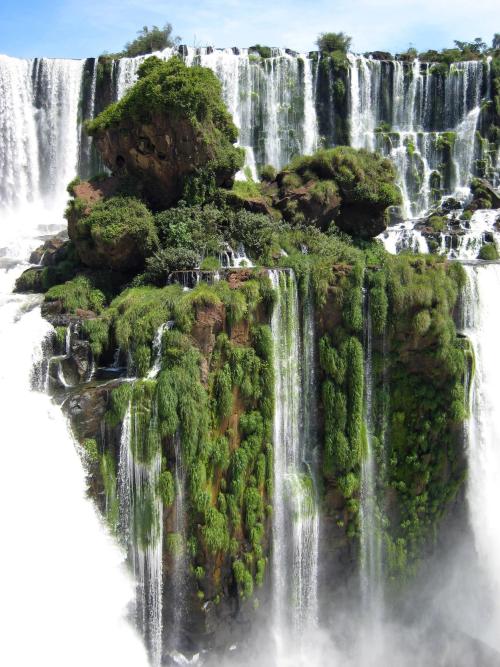I Found A Book About Cats From 1873 And I’m Absolutely Losing My Mind


i found a book about cats from 1873 and i’m absolutely losing my mind
More Posts from Rocks-everywhere and Others

Heidi Gustafson, who has spent the past five years collecting and working with ocher, walks along Whidbey Island’s Double Bluff Beach, off the coast of Washington, in search of the material. She came to scout this area, where she spent time as a child, after recalling its interesting cliff exposure.Some ochers, Gustafson believes, are calling out to be turned into a pigment. Others are more resistant. Those ocher fragments are either returned to their point of origin, or, if Gustafson cannot get back there, placed outside in a stone graveyard of sorts that she has created in the forest near her cabin. A few of her ocher-based artworks hang on the wall.
https://www.nytimes.com/2019/10/24/t-magazine/ocher-heidi-gustafson.html
Imagine your mum being so terrified of you becoming a poet like your dad that you accidentally become the world’s first computer programmer instead
Big trays of fossil sea urchins
nice_little_urchins

I now have some availability for illustration work! 🖌 My focus is Earth sciences, but I also take design and personal commissions. If you are interested, dm or visit my website: cameron-brideoake.com

Penitentes Rows of sparkling snow pinnacles range beside a high Andean pass between Chile and Argentina. Silent and eerie, the Agua Negra Pass high in the remote Andes links La Serena in Chile with San Juan Province in Argentina. At an altitude of 15,633ft (4765m) it is one of the world’s highest motoring passes—a tough 12-hour drive with a high risk of plunging into a ravine or of being swept away by a landslide. The sky is dark in the thin air, and the shadowy ranks of the Penitentes—pinnacles of frozen snow 6-20ft (1.8-6m) tall—lining the steep slopes like white hooded figures, add to the spine-chilling atmosphere. In 1835, the British naturalist Charles Darwin thought that the pinnacles were formed by wind action. More recent studies show that these ice pinnacles form when ice is below the freezing temperature of water, but being bombarded with sunlight and undergoing sublimation. Tiny depressions begin forming as the ice sublimates, and sunlight is focused into these depressions, causing the ice to sublimate more rapidly at those spots. The end result is a field of spiky ice, that this photographer described as “hell to cross”. ~JM Image Credit: https://flic.kr/p/5W1xUZ More Info: Penitentes: http://bit.ly/1LUcEXv Video-Penitentes: http://bit.ly/1Fleb4K Betterton, M. D. (2000). Formation of structure in snowfields: Penitentes, suncups, and dirt cones. http://bit.ly/1KEd5b1 Sublimation: http://on.doi.gov/1HUN06X Luciano Roque Catalano. Book. “Snow Penitents” http://bit.ly/1FTnRr0
*holds cat like baby*










the great bear rainforest in british columbia is one of the largest coastal temperate rain forests in the world, with twenty five thousand square miles of mist shrouded fjords and densely forested islands that are home to white furred black bears.
neither albino nor polar bear, these rare black bears (there are fewer than five hundred) are known as kermode bears, or what the gitga’at first nation call mooksgm’ol, the spirit bear — a word they did not speak to european fur traders lest the bears be discovered and hunted. to this day, it remains taboo to hunt a spirit bear, or to mention them to outsiders.
the white fur in these bears is triggered by a recessive mutation of the same gene associated with red hair and fair skin in humans. though it remains unclear as to how the trait arose (or disappeared), it is especially pronounced on certain islands.
photos by (click pic) paul nicklen x, fabrice simon, denis binda, kyle breckenridge, and paul burwell

Iguaza Falls, on the border of Argentina and Brazil, is one of the widest waterfalls on Earth.


The Titanoboa, is a 48ft long snake dating from around 60-58million years ago. It had a rib cage 2ft wide, allowing it to eat whole crocodiles, and surrounding the ribcage were muscles so powerful that it could crush a rhino. Titanoboa was so big it couldn’t even spend long amounts of time on land, because the force of gravity acting on it would cause it to suffocate under its own weight.
How is Biotechnology Preparing us to Live on the Moon and Mars?
The adventures awaiting astronauts on future long-duration missions have technologists researching sustainable ways to live away from Earth. We’re using what we know from almost 20 years of a continuous human presence on the International Space Station and looking at new technologies to prepare for extended stays on the Moon and Mars.

Biotechnology – technology that uses living organisms to make products that provide a new use – is key to this research.
With biotechnology, we’re developing new ways to manufacture medicines, build habitats and more in space. Here are some ways biotechnology is advancing spaceflight and how the same research is reaping benefits on Earth.

Healthy astronauts
Planning ways to supply food for a multi-year mission on the Moon or Mars may require making food and nutrients in space. Our scientists are testing an early version of a potential solution: get microorganisms to produce vital nutrients like those usually found in vegetables. Then, whenever they’re needed, astronauts can drink them down.
The microorganisms are genetically engineered to rapidly produce controlled quantities of essential nutrients. Because the microorganisms and their food source both have a long shelf-life at room temperature and only need water to be activated, the system provides a simple, practical way to produce essential nutrients on-demand. The same kind of system designed for space could also help provide nutrition for people in remote areas of our planet.
Our researchers are evaluating the first batches of BioNutrient samples that came back to Earth after an experimental run on the International Space Station.

Because space travel takes a toll on the human body, we’re also researching how biotechnology can be used to advance the field of regenerative medicine.
Related cells that are joined together are collectively referred to as tissue, and these cells work together as organs to accomplish specific functions in the human body. Blood vessels around the cells vascularize, providing nutrients to the tissue to keep it healthy.
Our Vascular Tissue Challenge offers a $500,000 prize to be divided among the first three teams that successfully create thick, metabolically-functional human vascularized organ tissue in a controlled laboratory environment. The vascularized, thick-tissue models resulting from this challenge will function as organ analogs, or models, that can be used to study deep space environmental effects, such as radiation, and to develop strategies to minimize the damage to healthy cells.
Plant factories
Humans have relied on plants’ medicinal qualities for thousands of years for everything from alleviating minor ailments to curing serious diseases. Now, researchers are trying to simplify the process of turning plants into medicine (i.e. how to make it compact and portable). If successful, the cost of biomanufacturing pharmaceuticals on Earth could go down, and plants could produce medicines in space.

Creating medicine on demand isn’t something we typically do, so we’re turning to experts in the field for help. Researchers at the University of California, Davis are transforming plants into mini-medicine factories for future Mars missions. They’re genetically altering an ordinary type of lettuce so that it produces a protein called parathyroid hormone. This hormone is an approved drug for treating osteoporosis, a common condition where bones become weak and brittle.

This type of research is vital to long duration spaceflight. When astronauts land on Mars, they’ll need to be strong—ready to explore. The length of the flight in zero gravity to get there and lower gravity on the surface could have a negative impact on human bones. Having the technologies needed to treat that possibility, and other unanticipated health effects of long duration spaceflight, is crucial.
Growing habitats
Vitamins aren’t the only thing astronauts could be growing on Mars; we’re exploring technologies that could grow structures out of fungi.
An early-stage research project underway at our Ames Research Center is prototyping technologies that could “grow” habitats on the Moon, Mars and beyond out of life – specifically, fungi and the unseen underground threads that make up the main part of the fungus. These tiny threads build complex structures with extreme precision, networking out into larger structures like mushrooms. With the right conditions, they can be coaxed into making new structures – ranging from a material similar to leather to the building blocks for a planetary home.
The myco-architecture project envisions a future where astronauts can construct a habitat out of the lightweight fungi material. Upon arrival, by unfolding a basic structure made up of dormant fungi and simply adding water, the fungi would grow around that framework into a fully functional human habitat – all while being safely contained to avoid contaminating the external environment.

Recycling waste
Once astronauts arrive on the surface of the Moon or a more distant planet, they’ll have to carefully manage garbage. This waste includes some stuff that gets flushed on Earth.
Today, we’re already using a recycling system on the space station to turn urine into drinking water. Poop on the other hand is contained then disposed of on spacecraft returning to Earth. That won’t be possible on more distant journeys, so, we’re turning to biomanufacturing for a practical solution.
Biology can serve as an effective recycling factory. Microorganisms such as yeast and algae feed on all kinds of things classified as “mission waste.” Processing their preferred form of nourishment generates products that can serve as raw materials used to make essential supplies like nutrients, medicines, plastic and fuel.

By taking a careful look at biological processes, we hope to develop new, lightweight systems to leverage that biology to do some helpful in-space manufacturing.
From Space to Earth
Biotechnology is preparing us for longer space missions to the Moon and then Mars – farther from Earth than humans have ever traveled before. As we prepare for those exciting missions, we’re also conducting research on the space station for the primary benefit of everyone on Earth.
January is National Biotechnology Month. To learn more about some of the ways NASA is using biotechnology to solve challenges in space and improve life on Earth, visit this link.
Make sure to follow us on Tumblr for your regular dose of space: http://nasa.tumblr.com
-
 arewealloststars liked this · 4 weeks ago
arewealloststars liked this · 4 weeks ago -
 sleepydreameroncloud9 reblogged this · 1 month ago
sleepydreameroncloud9 reblogged this · 1 month ago -
 docdust liked this · 1 month ago
docdust liked this · 1 month ago -
 fogandfireflies liked this · 1 month ago
fogandfireflies liked this · 1 month ago -
 robin-games liked this · 3 months ago
robin-games liked this · 3 months ago -
 trapperbeasley liked this · 3 months ago
trapperbeasley liked this · 3 months ago -
 katerambeau liked this · 3 months ago
katerambeau liked this · 3 months ago -
 jodieliker reblogged this · 3 months ago
jodieliker reblogged this · 3 months ago -
 jodieliker liked this · 3 months ago
jodieliker liked this · 3 months ago -
 dougboules liked this · 3 months ago
dougboules liked this · 3 months ago -
 andthebubbles reblogged this · 3 months ago
andthebubbles reblogged this · 3 months ago -
 andthebubbles liked this · 3 months ago
andthebubbles liked this · 3 months ago -
 brianastarling reblogged this · 3 months ago
brianastarling reblogged this · 3 months ago -
 lunarvoyager reblogged this · 3 months ago
lunarvoyager reblogged this · 3 months ago -
 tuulenhumina reblogged this · 3 months ago
tuulenhumina reblogged this · 3 months ago -
 tuulenhumina liked this · 3 months ago
tuulenhumina liked this · 3 months ago -
 xdarkabyssx reblogged this · 3 months ago
xdarkabyssx reblogged this · 3 months ago -
 onelionheart reblogged this · 3 months ago
onelionheart reblogged this · 3 months ago -
 skumppakeisarinna reblogged this · 3 months ago
skumppakeisarinna reblogged this · 3 months ago -
 weekendwhovian liked this · 3 months ago
weekendwhovian liked this · 3 months ago -
 surkea reblogged this · 3 months ago
surkea reblogged this · 3 months ago -
 kuopanpohja reblogged this · 3 months ago
kuopanpohja reblogged this · 3 months ago -
 idontneeduoradrink liked this · 4 months ago
idontneeduoradrink liked this · 4 months ago -
 likeahalfdozenpiecesofstone liked this · 5 months ago
likeahalfdozenpiecesofstone liked this · 5 months ago -
 paintingsublimely8 liked this · 7 months ago
paintingsublimely8 liked this · 7 months ago -
 kuopanpohja reblogged this · 9 months ago
kuopanpohja reblogged this · 9 months ago -
 sundappledfur liked this · 9 months ago
sundappledfur liked this · 9 months ago -
 depravus liked this · 10 months ago
depravus liked this · 10 months ago -
 naminexe liked this · 10 months ago
naminexe liked this · 10 months ago -
 wizards-and-tea reblogged this · 10 months ago
wizards-and-tea reblogged this · 10 months ago -
 birdhand-arts-extra-chaos reblogged this · 10 months ago
birdhand-arts-extra-chaos reblogged this · 10 months ago -
 birdhand-art liked this · 10 months ago
birdhand-art liked this · 10 months ago -
 smikatoast reblogged this · 10 months ago
smikatoast reblogged this · 10 months ago -
 sadler231 liked this · 10 months ago
sadler231 liked this · 10 months ago -
 vee-correspondance-book reblogged this · 10 months ago
vee-correspondance-book reblogged this · 10 months ago -
 zorro-perdido reblogged this · 11 months ago
zorro-perdido reblogged this · 11 months ago -
 fruit-fly-hand-rub liked this · 11 months ago
fruit-fly-hand-rub liked this · 11 months ago -
 possibly-a-table-or-just-gay reblogged this · 11 months ago
possibly-a-table-or-just-gay reblogged this · 11 months ago -
 deadwdoodles liked this · 11 months ago
deadwdoodles liked this · 11 months ago -
 moved-to-aftout liked this · 11 months ago
moved-to-aftout liked this · 11 months ago -
 brainsqueals liked this · 11 months ago
brainsqueals liked this · 11 months ago -
 artpsydemain liked this · 11 months ago
artpsydemain liked this · 11 months ago -
 tsubame17 liked this · 11 months ago
tsubame17 liked this · 11 months ago -
 assorted-bean reblogged this · 11 months ago
assorted-bean reblogged this · 11 months ago -
 eepybubble reblogged this · 11 months ago
eepybubble reblogged this · 11 months ago -
 eepybubble liked this · 11 months ago
eepybubble liked this · 11 months ago -
 overcaststargazing liked this · 11 months ago
overcaststargazing liked this · 11 months ago -
 butchshadowthehedgehog reblogged this · 11 months ago
butchshadowthehedgehog reblogged this · 11 months ago -
 stenchoftheunburied liked this · 11 months ago
stenchoftheunburied liked this · 11 months ago
225 posts